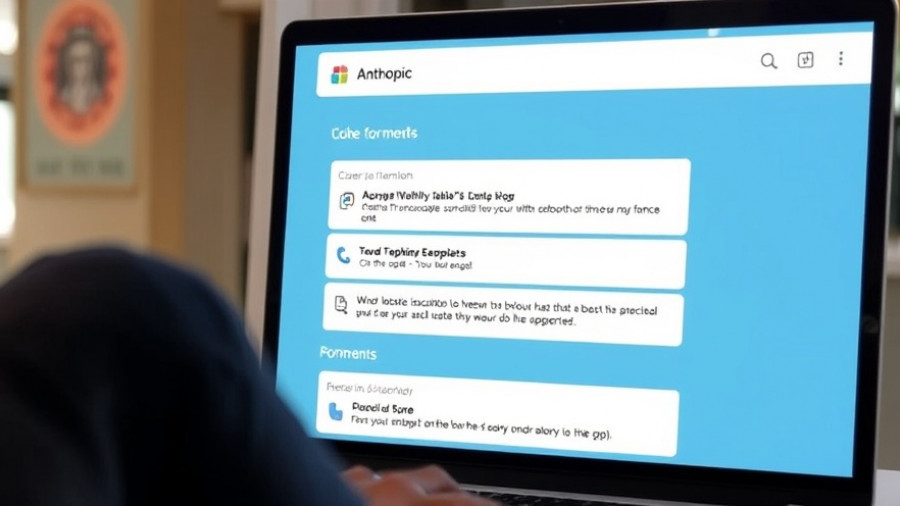
Understanding AI Coding Models: A Comparative Analysis
As artificial intelligence continues to evolve, developers are faced with an increasing range of coding models, each boasting unique strengths and weaknesses. Among these, two significant players have emerged: Claude Sonnet 4.5 and GLM 4.6. This valuable comparison dives deep into their performance metrics, feature sets, and overall efficiency, helping coders make informed decisions.
Speed vs. Creativity: What Matters Most?
Claude Sonnet 4.5 shines in speed and efficiency, making it a go-to option for projects where time is of the essence. Its quick output is particularly advantageous for those tackling simpler coding tasks, such as building straightforward portfolio websites. However, this speed often comes at the cost of creative output.
On the flip side, GLM 4.6 positions itself as a more balanced option. While it doesn't match the blistering speed of Claude Sonnet 4.5, it introduces additional features, enriching the user's experience. For instance, it supports enhanced functionalities like a light/dark mode toggle, making it ideal for projects requiring a balance of speed and creative input.
Real-World Performance: Portfolio Websites and Game Development
Performance benchmarks highlight the contrasts in how these models handle vastly different tasks. In developing a portfolio website, users noted that Claude Sonnet 4.5 produced the fastest and most polished output, albeit with somewhat predictable design choices. In comparison, GLM 4.6, while slightly slower, provided a touch more creativity by incorporating additional features that improved user experience.
When it comes to game development, the dynamics shift significantly. GPT-5 Codex, while not part of the direct comparison, often outperformed both Claude Sonnet and GLM in terms of creative coding. This model produced intricate playable designs, showcasing its advanced creative capabilities. Unfortunately, its higher resource consumption and slower processing times could hinder its suitability for rapid tasks.
A More In-Depth Analysis: Token Efficiency and Features
One important factor in evaluating these models is token efficiency. Token efficiency, which refers to the model's ability to deliver robust outputs with minimal token usage, is crucial in optimizing development processes. GLM 4.6 stands out in this category, managing overall costs effectively while maintaining functional output.
Additionally, Claude Sonnet 4.5, despite its efficiency, can encounter challenges when tasked with complex coding challenges. While it excels in straightforward assignments, the intricacies involved in more detailed projects sometimes lead to lower quality outputs compared to its competitors.
Cost Considerations: Which Model Will Break the Bank?
Pricing is another critical dimension for developers when deciding on an AI model. Claude Sonnet, while offering speed and efficiency, comes with a higher price tag for token usage—roughly five times that of GLM 4.6 for inputs and more than eight times for outputs. This significant disparity may drive budget-conscious developers towards GLM 4.6, especially for projects with tight financial constraints.
Final Thoughts: Picking the Right Tool for the Job
The decision between Claude Sonnet 4.5 and GLM 4.6 boils down to individual project needs. If speed and efficiency are paramount, Claude Sonnet is an excellent choice. However, for a more comprehensive approach that balances functionality and cost, GLM 4.6 is worth considering.
As AI technology continues to mature, it’s vital for developers to adapt and choose tools that align closely with their project requirements and personal preferences. Explore further comparisons to strengthen your coding strategy and unlock new possibilities in your AI-driven development journey.
 Add Row
Add Row  Add
Add 




Write A Comment